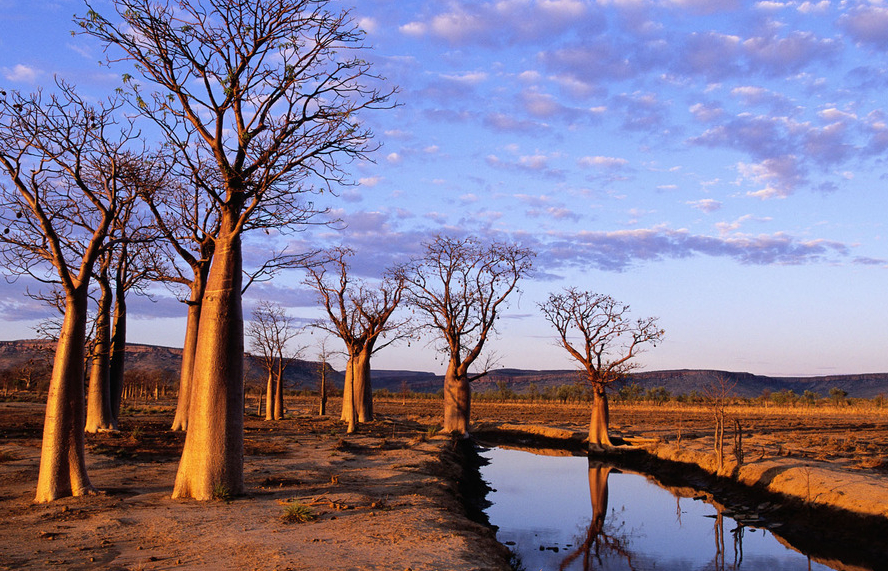
Australian Government Bulletin 51 of 27 March 1986 announced an increase in the size of the National Park from 13,000 hectares to the current 27,847 hectares. The area was added to the World Heritage List in 1981 and originally covered 600,000 hectares, but was later reduced to 240,000 hectares in 1995, including Mongo National Park.
(Cradle Mountain)
Lake St Clair National Park is located in the Central Highlands region of northern Tasmania, covering an area of 1614.43 square kilometers, about 310 km drive from the capital of Tasmania, Hobart, and about 140 km drive from the second largest city of Tasmania, Launceston.
(Namadgi National Park)
It is located in the Namaj Range south of Canberra in the Capital Territory, about 40 km drive from downtown Canberra. Namagi National Park covers an area of about 1,059 square kilometres, or 46% of Canberra's land area, and is covered by snow most of the year.
Established in 1984, Namagi National Park was inscribed on the Australian Heritage List in November 2008, making it one of 11 parks and reserves of interest in Australia, with quite a bit to see and play. There are plenty of wild activities, such as climbing or rappelling down marble rock formations, and cross-country skiing in winter. It is also an ideal place for outdoor adventures and exploring Aboriginal life.(Maryborough)
It is a city in Queensland, Australia, about 300 km north of Brisbane, and is bounded by the Mary River. The city has a population of about 26,000 (2004 data), and its sister city is the city of Hovey Bay in the northeast, which is famous for sightseeing at the nearby World Heritage site Fenser Island. It is also sometimes translated as the city of Maryboro.
(Manjera)
Growth is closely related to the development of the capital. Due to its location on the west coast of Australia, Manjela attracts many international tourists. The local government keeps the waters in good condition and beautiful beaches, which provide visitors with yachting and sea fishing activities.
(Devonport)
It is the third largest city in the Australian state of Tasmania, located in the northwest of Tasmania, and one of the most important seaport cities in Tasmania. For tourists, Devon Harbour is best known as the barge for the cruise ship Spirit of Tasmania.
(Ayers Rock)
Also known as Ayers Rock, Ayers Boulder, the local Aboriginal people called it Uluru, Uluru Boulder. Ayers Rock is located in Uluru-Kata Tjuta National Park in the southern outback of Australia's Northern Territory, at 131.036E longitude and 25.348S latitude.
The nearest major city is the Northern Territory city of Alice Springs, about 460 km away, about 1960 km away from Darwin, the capital of the Northern Territory, and about 1600 km away from Adelaide, the capital of South Australia. The entire Uluru - Kata Tjuta National Park was designated as a World Cultural and Natural Heritage Site by UNESCO in 1987. According to the Australian Government, climbing on Ayers Rock in Australia has been permanently banned after sunset on October 25, 2019.
(Devil's Marble Reserve)
It is a scenic spot, located in a wide shallow valley, where thousands of large, round boulders are cleverly balanced against each other.
(Ningaloo Coast)
It is the Ningaloo Coast Marine and Land Heritage Area, located in a remote area on the west coast of Western Australia, covering an area of 604500hm2, with one of the longest offshore coral reefs in the world, including a buffer area of 705015hm2. Its terrestrial environment is extensive karst landscape, with developed underground caves and underground river water network.
(Tiverde Point)
It is the northernmost town in New South Wales, Australia. It had a population of 51,788 in 2006.
(Lismore)
It is a small city in New South Wales, Australia, with a subtropical climate, and is one of the main towns on the east coast of Australia; The population is approximately 27,000 (2006).

